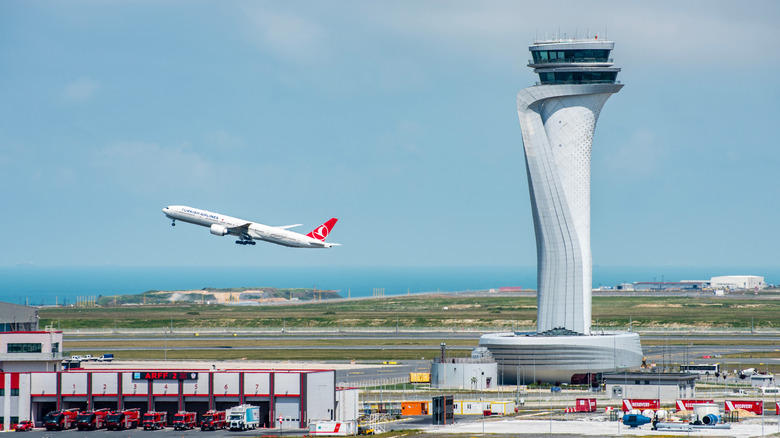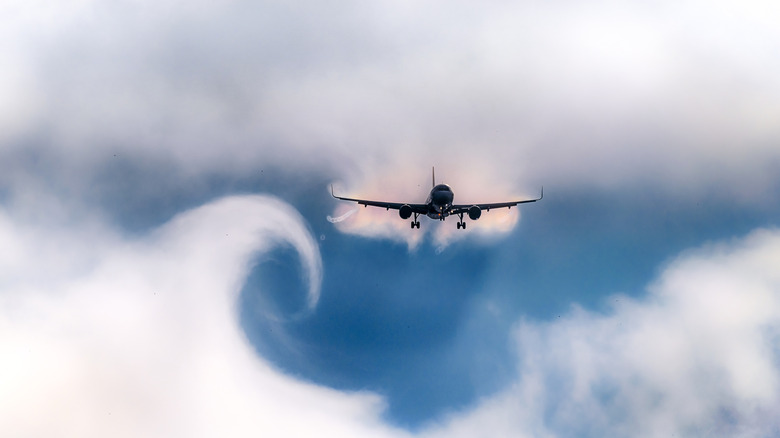What Does It Mean When A Pilot Says 'Heavy'?
Not unlike truck drivers, the pilots of commercial aircraft have an entire dictionary of lingo and shorthand used to quickly and easily communicate with one another, as well as air traffic controllers down in the tower. To an uninitiated listener, it might sound like gibberish, but all of these terms are vital identifiers used to ensure the safety of planes, pilots, and their passengers. Some examples of this include military pilots acknowledging each other with "Roger," or a pilot in danger shouting "Mayday."
One particularly confusing term you may hear a pilot using while in the process of landing is "heavy," usually paired with the plane's callsign. That certainly sounds like a strange thing to highlight; it's a commercial airliner weighing several hundred thousand pounds, of course it's heavy. However, the use of "heavy" when a pilot is communicating with air traffic control has less to do with the weight of the plane, and more to do with the intense wake all of that weight is leaving behind it.
Heavy is a warning about the intense turbulence left in an aircraft's wake
When a pilot says "heavy," they're telling air traffic control that they're piloting a large plane that's creating a very strong wake behind it. With this warning, the controllers can direct other planes in the air away from the wake, ensuring that nobody encounters any problems.
You know how, when a plane is passing overhead, it can leave a couple of twisty trails behind it? That's called wake turbulence. When an aircraft produces powerful lift, it literally cuts through the air, twisting it up into a long stream behind it. That stream of disturbed air has a lot of contained force that hasn't yet dissipated, and if another plane flew through it, they'd basically absorb the first plane's weight as turbulence.
Naturally, if a plane is larger in size and heavier in weight, the wake it creates as it flies is going to be equally large and severe. Planes typically create the most wake when taking off, departing, arriving, and landing, all times when there's very likely to be another plane right behind them. If any smaller planes taking off or landing fly through that wake, they could be rocked right out of the air. One of the most infamous F-35 crashes of the last decade was attributed to wake turbulence.

